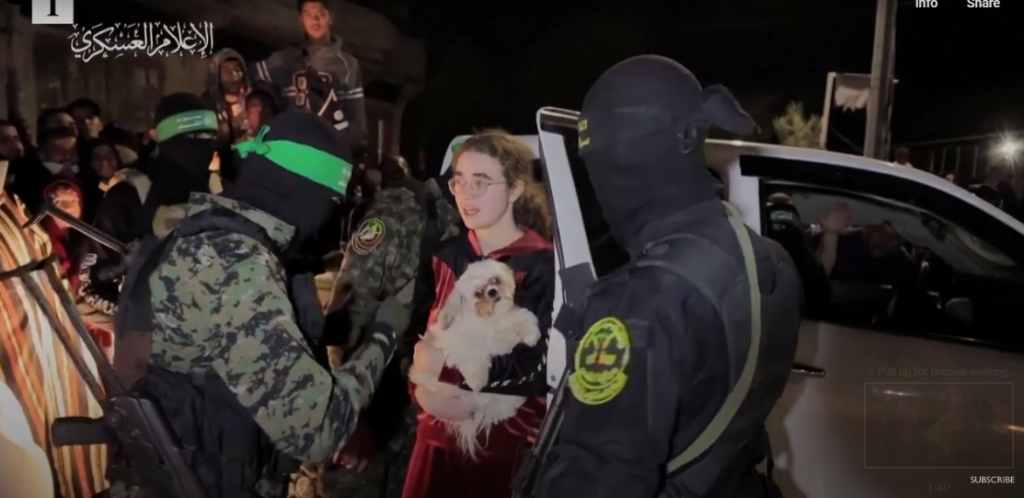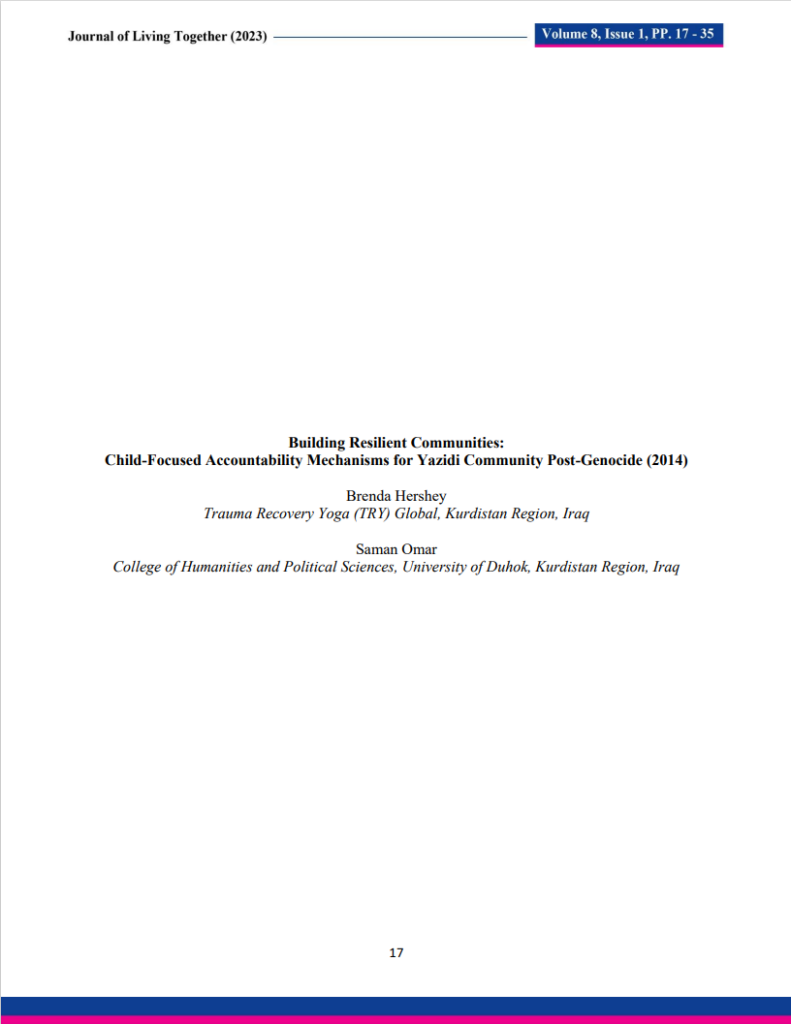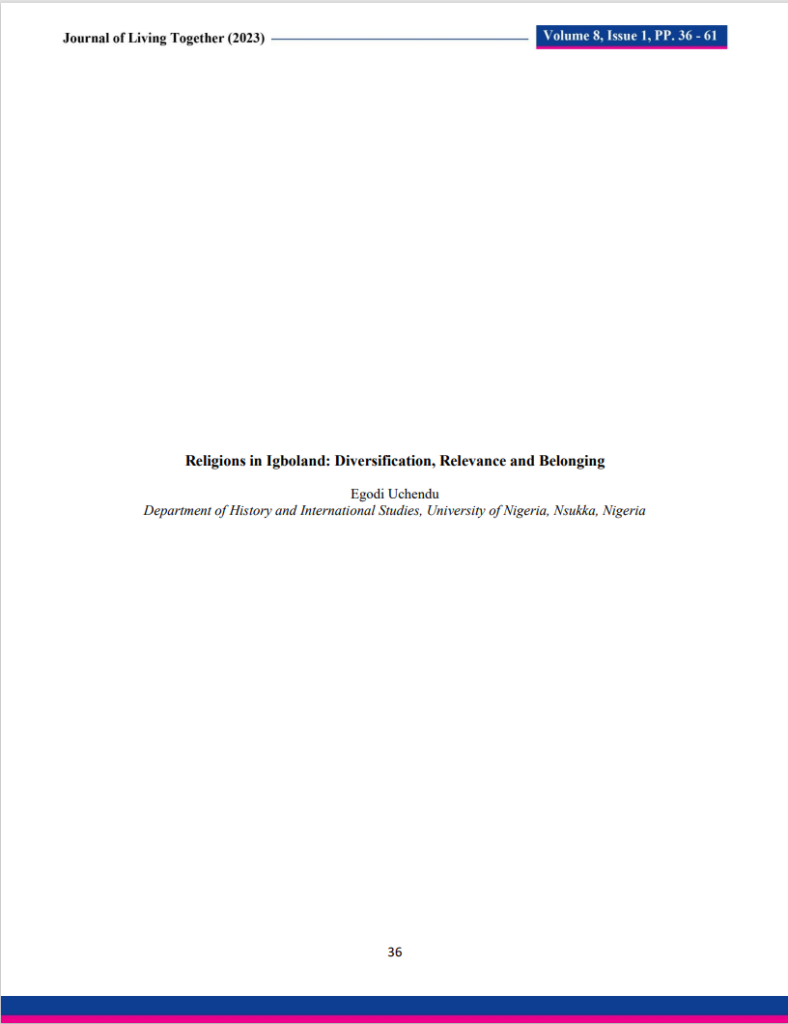Assessing Hostage Release by Hamas and the Feasibility of a Two-State Solution in the Israeli-Palestinian Conflict: Unlocking Lasting Peace

Introduction
This policy paper explores the possibility of using the release of hostages by Hamas as a means to end the Israeli-Hamas war and examines the broader question of resolving the Israeli-Palestinian conflict. While hostage release by Hamas, and the release of Palestinian prisoners by Israel, may serve as a confidence-building measure, a comprehensive solution necessitates addressing core issues.
The release of hostages by Hamas marks a potential turning point in the Israeli-Hamas war, offering a glimmer of hope for a continuous negotiated cease-fire and possible resolution. As the region grapples with the scars of conflict, it becomes imperative to outline a comprehensive framework for addressing the underlying issues and engaging in post-war reconciliation. Here, we outline key components that could contribute to fostering lasting peace in the region.
Hostage Release and Its Impact on Israeli-Hamas Relations
The release of hostages by Hamas could be a positive step in de-escalating tensions. It may build trust and create an atmosphere conducive to dialogue with the Palestinian leaders. The same could be said of the release of Palestinian prisoners by Israel. However, it is crucial to recognize that this alone cannot address the deep-rooted issues contributing to the conflict.
Addressing Core Issues
To achieve a sustainable resolution after the war, attention must be given to core issues, including borders, refugees, security, and the status of Jerusalem. A comprehensive peace agreement requires both Israelis and Palestinians to engage in meaningful negotiations with the willingness to make compromises.
The Role of International Mediation
International actors, including the United Nations, the United States, and regional powers, can play a pivotal role in facilitating negotiations. Mediation efforts should focus on creating a framework for dialogue, ensuring the implementation of agreements, and addressing grievances on both sides. International Center for Ethno-Religious Mediation (ICERMediation) is willing and ready to join other international organizations and state sponsored third party interveners in their ongoing mediation efforts.
Two-State Solution: A Viable Path to Peace?
The two-state solution envisions the creation of an independent Palestinian state alongside Israel. While widely supported by the international community, challenges such as border delineation, the right of return, and security concerns must be carefully negotiated. The two-state solution, if implemented successfully, could provide a foundation for lasting peace.
Alternatives and Contingency Plans
In the event that a two-state solution faces insurmountable obstacles, alternative models such as a confederation or a binational state should be explored. Flexibility and a commitment to finding a workable solution are essential for achieving lasting peace.
Building Trust and People-to-People Initiatives
Building trust among Israelis and Palestinians is crucial for any peace process. People-to-people initiatives, cultural exchanges, and educational programs can foster understanding and tolerance, contributing to a more positive atmosphere for negotiations. Cultural exchanges, sports events, and other people-to-people initiatives can break down stereotypes and build personal connections between Israelis and Palestinians. Increased interaction on a societal level can dispel mistrust and create a foundation for peaceful coexistence.
Comprehensive Truth and Reconciliation Commission
Establishing a Truth and Reconciliation Commission (TRC) can serve as a platform for acknowledging past grievances, fostering transparency, and providing a space for victims to share their experiences. The TRC should be composed of impartial individuals, including international observers, to ensure credibility. Since many of the hostages taken by Hamas are children, formulating a child-focused Truth and Reconciliation Commission is highly recommended.
Confidence-Building Measures
To rebuild trust, both parties must engage in confidence-building measures. This could include the gradual withdrawal of military forces from sensitive areas, the release of prisoners on both sides, and joint economic initiatives that benefit communities on both sides of the conflict.
Cross-Border Economic Initiatives
Economic collaboration can be a powerful tool for reconciliation. Joint ventures, trade agreements, and infrastructure projects that involve cooperation between Israelis and Palestinians can contribute to mutual economic prosperity, creating incentives for lasting peace.
Educational Programs Promoting Mutual Understanding
Implementing educational programs that foster a more accurate and nuanced understanding of each other’s history, culture, and aspirations is crucial. These programs can be integrated into school curricula, promoting tolerance and empathy from an early age.
Peacekeeping Forces
The involvement of neutral international actors in the form of peacekeeping forces can provide a stabilizing influence. These forces can help monitor and enforce agreements, ensuring compliance and preventing a resurgence of hostilities.
Transitional Justice Mechanisms
In addition to a Truth and Reconciliation Commission, transitional justice mechanisms, such as trials for war crimes and reparations for victims, can contribute to accountability and the restoration of justice. Striking a balance between justice and reconciliation is essential for long-term stability.
Rebuilding Infrastructure and Communities
Investment in rebuilding infrastructure, homes, and communities that were affected by the conflict is vital. This not only addresses immediate humanitarian needs but also provides a tangible demonstration of the commitment to rebuilding a shared future.
International Support and Funding
The international community must provide robust support, both financial and diplomatic, to underpin the reconciliation process. This support can facilitate the implementation of initiatives outlined in the reconciliation framework and ensure the sustained commitment of the involved parties.
Conclusion
While the release of hostages by Hamas could be a positive step, it is insufficient on its own to bring about lasting peace. A comprehensive approach addressing core issues, international mediation, and a commitment to finding common ground are essential. The two-state solution remains a viable option, but alternatives should be considered if obstacles arise. The path to peace requires dedication, compromise, and a collective commitment to a future where Israelis and Palestinians coexist in security and prosperity.
The release of hostages by Hamas presents an opportunity for a new chapter in Israeli-Hamas relations. Once the war ends, we believe that a holistic post-war reconciliation framework, encompassing truth and reconciliation, confidence-building measures, economic collaboration, education, international peacekeeping, and more, is essential for achieving sustainable peace. The road ahead will be challenging, but with unwavering commitment and international support, a future of coexistence and prosperity is within reach.


